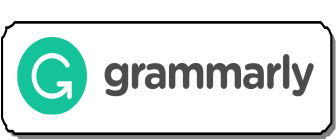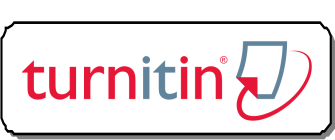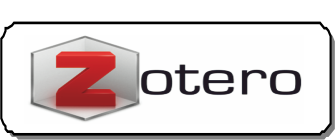Implementation Contextual Teaching Learning (CTL) Model in Fiqh Lessons at MTs Darul Muta'alimin Samarinda
Abstract
This research is focused on implementing the contextual teaching and learning (CTL) model for Fiqh subjects at MTs Darul Muta'alimin Samarinda. The research method used is descriptive qualitative, the research subjects include the Deputy Principal for Curriculum, Fiqh subject teachers, and students. Data collection techniques were carried out using observation, interviews, and documentation, to test the validity of the data used triangulation techniques. The results showed that the implementation of the CTL model was carried out through a learning process starting from preparation by preparing a lesson plan (RPP), implementation and evaluation stages according to the components and characteristics as well as matters related to CTL learning, namely; 1) Develop students' critical thinking so that learning activities are more meaningful, 2) Provide motivation so that students can actively participate in learning activities, 3) Develop students' curiosity by providing opportunities to express opinions, 4) Utilization of media and resources learn optimally, both media based on information technology or media and resources available in the surrounding environment, 5) Implement Inquiry learning by providing opportunities to find understanding from experience, 6) Creating a learning community by forming discussion groups, 7) Reflecting and drawing conclusions from learning outcomes, and 8) Conducting an objective and authentic assessment of each student according to the student's abilities.
References
Amir, Mohammad Faizal. “Pengaruh pembelajaran kontekstual terhadap kemampuan pemecahan masalah matematika siswa sekolah dasar.” Dalam Prosiding Seminar Nasional Pendidikan, 34–42, 2015.
Aris Shohimin. Model Pembelajaran Inovasi dalam Kurikulum 2013,. Yogyakarta: AR Ruzz Media, 2014.
Darmawati (Guru Fiqh). Pelaksanaan Pembelajaran CTL. Wawancara, 20 April 2020. MTs Darul Muta’alimin.
Gantini, Ine. “Penerapan Strategi Pembelajaran Kontekstual Pada Pembelajaran Zakat” 1, no. 2 (14 Desember 2021): 174–83.
Guru MTs Darul Muta’alimin. “Dokumen Kumpulan Silabus dan RPP MTS Darul Muta’alimin,” 2020.
Halimah, Siti Nur, Ratu Betta Rudibyani, dan Tasviri Efkar. “Penerapan Model Inkuiri Terbimbing dalam Meningkatkan Motivasi Belajar dan Penguasaan Konsep Siswa.” Jurnal Pendidikan dan Pembelajaran Kimia 4, no. 3 (2015): 997–1010.
Hamzah B. Uno. Perencanaan Pemeblajaran. Jakarta: Bumi Aksara, 2012.
Hasibuan, M. Idrus. “Model Pembelajaran CTL (Contextual Teaching and Learning).” Logaritma: Jurnal Ilmu-ilmu Pendidikan dan Sains 2, no. 01 (2014).
Hasibuan, Subriadi, Ida Karnasih, dan Dian Armanto. “Pembelajaran Kontekstual Untuk Meningkatkan Karakter Dan Kemampuan Berpikir Kritis Siswa Di Madrasah Tsanawiyah.” Jurnal Silogisme: Kajian Ilmu Matematika dan Pembelajarannya 6, no. 1 (2021): 11–22.
Indonesia, Kamus Besar Bahasa. “Departemen Pendidikan Nasional.” Jakarta: Pusat Bahasa, 2008.
Kahfi, Martin, Yeli Ratnawati, Wawat Setiawati, dan Asep Saepuloh. “Efektivitas Pembelajaran Kontekstual dengan Menggunakan Media Audiovisual dalam Meningkatkan Motivasi dan Prestasi Siswa Pada Pembelajaran IPS Terpadu.” Jurnal Ilmiah Mandala Education 7, no. 1 (2021).
Kementrian Agama RI. “Standar Kompetensi dan Standar Isi Pendidikan Agama Islam, Bahasa Arab Madrasah.” Kementrian Agama RI, 2013.
Khoirunnisa, Isma, dan Suharto Linuwih. “Penerapan Pembelajaran Contextual Teaching and Learning (CTL) untuk Meningkatkan Pemahaman Konsep Siswa Tahfidz dan Reguler Materi Gerak Parabola.” UPEJ Unnes Physics Education Journal 9, no. 2 (2020): 110–16.
Kusmijati, Neneng. “Penerapan Penilaian Autentik Sebagai Upaya Memotivasi Belajar Peserta Didik.” Dalam Proceeding Seminar Nasional LPP. Purwokerto, 2014.
Lipiah, Dede, Nabillah Septianti, Rachmat Yuwono, dan Rindi Atika. “Implementasi Model Pembelajaran Kontekstual di Sekolah Dasar.” TSAQOFAH 2, no. 1 (2022): 31–40.
Listiyani, Laily Rochmawati. “Implementasi model pembelajaran inkuiri berbasis refleksi kelompok pada materi reaksi redoks.” JIPVA (Jurnal Pendidikan IPA Veteran) 2, no. 1 (2018): 58–65.
Miles, Matthew B., A. Michael Huberman, dan Johnny Saldana. Qualitative Data Analysis: A Methods Sourcebook. SAGE Publications, 2014.
Muamanah, Hidayatul. “Pelaksanaan Teori Belajar Bermakna David Ausubel Dalam Pembelajaran Pendidikan Agama Islam.” Belajea; Jurnal Pendidikan Islam 5, no. 1 (2020): 161–80.
Mudawam, Syafaul. “Syari’ah-Fiqih-Hukum Islam: Studi tentang Konstruksi Pemikiran Kontemporer.” Asy-Syir’ah: Jurnal Ilmu Syari’ah dan Hukum 46, no. 2 (2012).
Mudlofir, H. Ali. Desain Pembelajaran Inovatif: Dari Teori ke Praktik. PT. RajaGrafindo Persada, 2021.
Nasution, Sari Wahyuni Rozi. “Penerapan Model Inkuiri Terbimbing (Guided Inquiry) dalam Meningkatkan Kemampuan Berpikir Kritis pada Pembelajaran Fisika.” Jurnal Education and Development 3, no. 1 (2018): 1–1.
Ningsih, Dwi Untari. “Penerapan strategi pembelajaran think talk write berbasis kontekstual untuk meningkatkan keterampilan proses sains siswa dalam pembelajaran biologi kelas x-8 sma negeri 1 sukoharjo tahun pelajaran 2010/2011,” 2012.
Nurdin, Usman. Implementasi Pemebelajaran. Yogyakarta: Rajawali Pers, 2011.
Nurdyansyah, Nurdyansyah, dan Toyiba Fitriyani. “Pengaruh Strategi Pembelajaran Aktif Terhadap Hasil Belajar Pada Madrasah Ibtidaiyah.” Universitas Muhammadiyah Sidoarjo, 2018.
Parhan, Muhamad, dan Bambang Sutedja. “Penerapan Pendekatan Pembelajaran Kontekstual dalam Pendidikan Agama Islam di Universitas Pendidikan Indonesia.” TARBAWY: Indonesian Journal of Islamic Education 6, no. 2 (2019): 114–26.
Permana, Fithri Angelia. “Pembelajaran Kontekstual Meningkatkan Hasil Belajar Materi Lingkaran Siswa Kelas VIII SMP Negeri 1 Idi Rayeuk.” Jurnal Serambi Akademica 10, no. 1 (2022): 1–14.
Permata, Riza Dyah. “Upaya Meningkatkan Kemampuan Pemecahan Masalah Matematika Melalui Pendekatan Contextual Teaching Learning (CTL) Siswa Kelas VIIID SMP Negeri 1 Mlati.” Universitas PGRI Yogyakarta, 2015.
Pratiwi, Khana Fitri, Nanik Wijayati, F. Widhi Mahatmanti, dan Marsudi Marsudi. “Pengaruh Model Pembelajaran Inkuiri Terbimbing Berbasis Penilaian Autentik Terhadap Hasil Belajar Siswa.” Jurnal Inovasi Pendidikan Kimia 13, no. 1 (2019).
Ramdani, Emi. “Model pembelajaran kontekstual berbasis kearifan lokal sebagai penguatan pendidikan karakter.” JUPIIS: Jurnal Pendidikan Ilmu-Ilmu Sosial 10, no. 1 (2018): 1–10.
Ramdhan, Rizal Muhammad. “Penilaian Autentik Dengan Menggunakan Model Pembelajaran Inkuiri Berbasis Simulasi Elektrik Dari Phet Interactive Simulation.” PhD Thesis, Universitas Pendidikan Indonesia, 2015.
Rusman. Model-model Pembelajaran mengembangkan profesionalisme guru. 2 ed. 6. Jakarta: Rajawali Pers, 2011.
Saleh, Marhamah. “Strategi Pembelajaran Fiqh dengan Problem-Based Learning.” JURNAL ILMIAH DIDAKTIKA: Media Ilmiah Pendidikan dan Pengajaran 14, no. 1 (2013).
Sastriani, Eli, dan Abdul Halim. “Pembelajaran CTL berbasis inkuiri untuk meningkatkan pemahaman konsep dan motivasi belajar siswa pada materi fluida statis.” Jurnal Pendidikan Sains Indonesia (Indonesian Journal of Science Education) 4, no. 2 (2016): 89–95.
Sinambela, Pardomuan NJM. “Kurikulum 2013 dan implementasinya dalam pembelajaran.” Generasi Kampus 6, no. 2 (2017).
Sugiyanto, Fadilah Nur, dan Saiful Ridlo. “Penggunaan Penilaian Autentik Dalam Pembelajaran Biologi Dengan Inkuiri Terbimbing Dan Pengaruhnya Terhadap Hasil Belajar Peserta Didik.” Journal of Biology Education 4, no. 3 (2015).
Suprapto, Edy. “Pengaruh model pembelajaran kontekstual, pembelajaran langsung dan motivasi berprestasi terhadap hasil belajar kognitif.” invotec 11, no. 1 (2015).
Taufik Rahman (Waka Kurikulum Sekaligus Guru Fiqh). Pelaksanaan Pembelajaran CTL di MTs Darul Muta’alimin. Wawancara, 11 Juni 2020. MTs Darul Muta’alimin Samarinda Seberang.
Trianto. Mendesain Model Pembelajaran Inovatif-Progresif. Jakarta: Kencana Media Grup, 2011.
Wina Sanjaya. Strategi Pembelajaran: Berorientasi Standar Prose Pendidikan. 10 ed. Jakarta: Kencana Prenada Media Grup, 2013.
Yusnaldi, Eka, Hendri Siregar, Muhd Hayyanul Damanik, Wahyu Iskandar, dan Muhammad Yusuf. “Implementation of Islamic Education Curriculum in Muhammadiyah 3 Basic School Padang Sidempuan.” SYAMIL: Jurnal Pendidikan Agama Islam (Journal of Islamic Education), 15 Desember 2020, 135–55. https://doi.org/10.21093/sy.v8i2.1991.
Zubaidah, Siti, dan JBFUNM UM. “Pembelajaran kontekstual berbasis pemecahan masalah untuk mengembangkan kemampuan berpikir kritis.” Dalam Makalah disampaikan pada Seminar Nasional dengan tema Inovasi Pembelajaran Berbasis pemecahan Masalah dalam Pembelajaran Biologi di Universitas Muhammadiyah Makasar, Makasar, Vol. 6, 2017.
Zulaiha, Siti. “Pendekatan contextual teaching and learning (CTL) dan implementasinya dalam rencana pembelajaran PAI MI.” Belajea; Jurnal Pendidikan Islam 1, no. 1 (2016).
Copyright (c) 2021 Indriana Rahmawati, Siti Julaiha, Siti Muri'ah, Abdul Basith, Khalidah Khalidah

This work is licensed under a Creative Commons Attribution-NonCommercial-ShareAlike 4.0 International License.
Please find the rights and licenses in SYAMIL Jurnal Pendidikan Agama Islam (Journal of Islamic Education). By submitting the article/manuscript of the article, the author(s) agree with this policy. No specific document sign-off is required.
1. License
The non-commercial use of the article will be governed by the Creative Commons Attribution license as currently displayed on Creative Commons Attribution-ShareAlike 4.0 International License.
2. Author(s)' Warranties
The author warrants that the article is original, written by stated author(s), has not been published before, contains no unlawful statements, does not infringe the rights of others, is subject to copyright that is vested exclusively in the author and free of any third party rights, and that any necessary written permissions to quote from other sources have been obtained by the author(s).
3. User/Public Rights
SYAMIL spirit is to disseminate articles published are as free as possible. Under the Creative Commons license, SYAMIL permits users to copy, distribute, display, and perform the work for non-commercial purposes only. Users will also need to attribute authors and Register on distributing works in the journal and other media of publications. Unless otherwise stated, the authors are public entities as soon as their articles got published.
4. Rights of Authors
Authors retain all their rights to the published works, such as (but not limited to) the following rights;
Copyright and other proprietary rights relating to the article, such as patent rights,
The right to use the substance of the article in own future works, including lectures and books,
The right to reproduce the article for own purposes,
The right to self-archive the article (please read out deposit policy),
The right to enter into separate, additional contractual arrangements for the non-exclusive distribution of the article's published version (e.g., post it to an institutional repository or publish it in a book), with an acknowledgment of its initial publication in this journal (SYAMIL Jurnal Pendidikan Agama Islam (Journal of Islamic Education)).
5. Co-Authorship
If the article was jointly prepared by more than one author, any authors submitting the manuscript warrants that he/she has been authorized by all co-authors to be agreed on this copyright and license notice (agreement) on their behalf, and agrees to inform his/her co-authors of the terms of this policy. SYAMIL will not be held liable for anything that may arise due to the author(s) internal dispute. SYAMIL will only communicate with the corresponding author.
6. Royalties
Being an open accessed journal and disseminating articles for free under the Creative Commons license term mentioned, author(s) aware that SYAMIL entitles the author(s) to no royalties or other fees.
7. Miscellaneous
SYAMIL will publish the article (or have it published) in the journal if the article’s editorial process is successfully completed. SYAMIL editors may modify the article to a style of punctuation, spelling, capitalization, referencing and usage that deems appropriate. The author acknowledges that the article may be published so that it will be publicly accessible and such access will be free of charge for the readers as mentioned in point 3.












